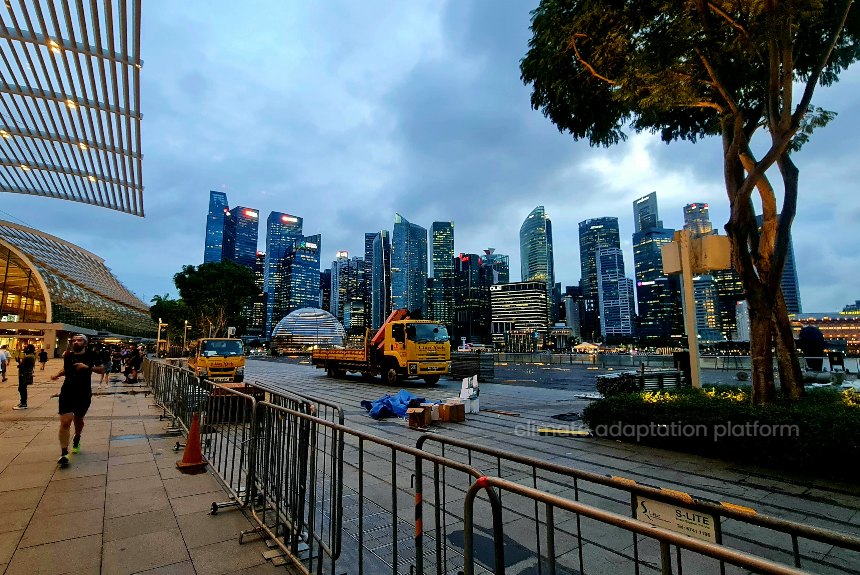In its editorial piece, the Lancet Planetary Health offers some attractive architectural solutions to help urban areas adapt to climate change.
Hurricanes have increased in intensity and frequency in the past two or three decades, particularly in the North Atlantic and Indian oceans. They have claimed lives and caused billions of dollars of damage to infrastructure and developments, especially in coastal areas, partially due to their increasing effects in the area.
Climate models predict an increase of 45 to 87 per cent of category 4 and 5 hurricanes in the Atlantic basin in the US. Category 5 is the deadliest kind, according to the editorial.
There has only been an average of 6 Atlantic hurricanes since the 1970s, but in 2017 alone, there were ten hurricanes. The worst was Category 5 Maria, which left 2,975 dead in Puerto Rico.
If hurricanes become the new norm, how will the design of our cities and houses adapt to this changing climate?
The editorial presented three exciting and innovative architectural designs that could withstand these solid and frequent hurricanes.
First, elevated houses or buildings on stilts. These designs could withstand storm damage and even storm surges and floods. They also design buildings that would be resilient to high winds and flying debris. Building designs by architect Dionisio González bring out a sense of “surrealism” but are designed for resilience against extreme weather conditions.
Second is the spherical-shaped homes conceived by architect Patrick Marsilli, which have been shown to withstand even a Category 5 hurricane, according to the editorial. According to a CNET article, these spherical “Ekinoids” also provide sustainable, disaster-proof and off-the-grid living” (Starr, 2013).
With our current lifestyle of consuming much power, water, packaging, and food, these spherical structures promise a much smaller footprint. Ekinoid homes stand on legs off the ground, making them flood and stormproof. It is accessible via a spiral staircase that can also be a hydroponic garden for food. It collects rainwater, recycles greywater, and is powered by a solar panel with an option to add a wind turbine (Starr, 2013).
The structure is also spacious, providing 239 square meters of living space over three floors. Its internal diameter is 9.75 meters, and its standing height is 12.8 metres (Starr, 2013).
Altogether, Ekinoid Homes can offer an all-in-one climate change solution package.
The third is the use of Climate Tile, a type of pavement used in Copenhagen, Denmark, to mitigate flooding in urban areas. Designed as an adaptation strategy against climate change, it is used to catch and redirect 30% of extra rainwater due to climate change, which can prevent the overloading of existing drainage infrastructure (Baldwin, 2018).
The water gathered or absorbed by the climate tiles can ‘funnel’ rainwater to areas of vegetation or into water banks. Climate tiles can work in tandem with roads, bike paths, urban furniture, and signage as sidewalk pavements in urban areas. They improve an area’s microclimate, add value for citizens, and raise their quality of life (McMullan, 2018).
The editorial says that these climate adaptation designs need a socio-political commitment to become a realistic option and funding research projects that will conceptualize what building designs should look like in the 21st century as solutions to short-term and long-term solutions in preserving the planet.
We recommend that cities with disaster-prone areas read our post on Building Back Better.
Sources
Hurricanes and architecture: adaptation to the destruction. (2018, October 10). The Lancet. Editorial. Volume 2, Issue 10, PE414. Retrieved from https://www.thelancet.com/journals/lanplh/article/PIIS2542-5196(18)30204-3/fulltext
Starr, M. (2013, April 18). Spherical house provides sustainable, disaster-proof living. CNET [Article]. Retrieved from https://www.cnet.com/news/spherical-house-provides-sustainable-disaster-proof-living/
Baldwin, E. (2018, September 20). Climate Tile Designed to Catch and Redirect Excess Rainwater from Climate Change. Arch Daily. Retrieved from https://www.archdaily.com/902399/climate-tile-designed-to-catch-and-redirect-excess-rainwater-from-climate-change
McMullan, T. (2018, September 14). If Hurricane Florence is the new norm, here’s how to redesign our cities to cope with climate change. Wired. Retrieved from https://www.wired.co.uk/article/hurricane-florence-climate-change-city-design



Leave a Reply